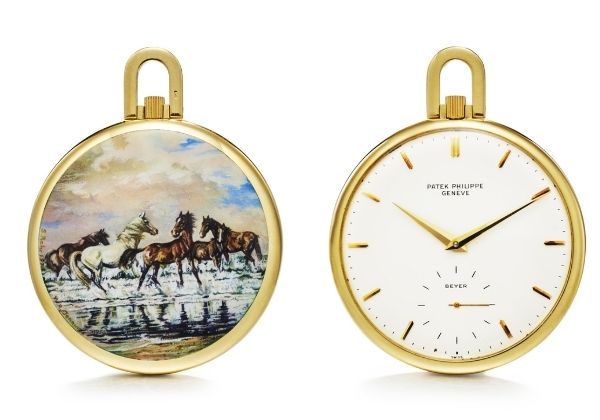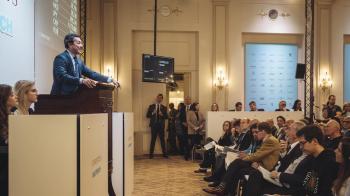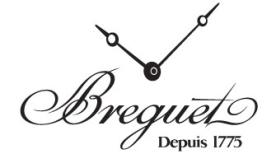Thanks to the internet, auction houses, and authorised dealers. This revolution has contributed to a much wider market for vintage and pre-owned watches.

The Times they are A-Changin'
Traditionally, a watch was the purchase of a lifetime: a gift from loved ones to mark an important event, or a studied purchase to commemorate a significant success. The timepiece was generally purchased in a jewellery or department store and was brand new. Generations of buyers purchased a watch in this manner and owned it for most of their life, satisfied with their unique treasure; just one single watch would mark time for all occasions. It was a personal and distinctive keepsake, to be passed on to family members in the hope that they would continue preserving and cherishing it. The entire watch industry was predicated on this concept, and still today watch companies such as Patek Philippe communicate around this theme.
All this has now changed. In the last 20 years, the watch offerings available on the market have evolved, and traditional watch buyers have adapted their purchasing and collecting behaviour to match. There are now many new watchmakers, offering more watches for many different tastes and at a variety of price points, opening up a new world of choices that can satisfy the taste and imagination of almost anyone. The key driver for this change is the internet. Information is now accessible freely and easily, and a potential buyer can consult the websites of established brands, collectors’ forums and social media feeds for information and inspiration.

The internet also facilitated the trading of watches between watch collectors, which was a significant step in the evolution of the market for vintage watches. Trading between collectors grew on watch discussion forums such as Timezone.com which was founded in 1995, where collectors could share their passions and knowledge, which inevitably led to buying and selling within the group. Online auction websites such as eBay became another peer-to-peer platform for trading between collectors. Eventually this practice developed into its own sector of the industry: new professional watch sellers emerged who specialised in pre-owned timepieces, with their websites designed to celebrate vintage watches and educate collectors, as well as trade.
The Auction World and the Rise of the Superstar Watch
The strong market for vintage watches means that a well-maintained watch can retain its value, and sometimes can even increase in value far beyond its original purchase price, if demand in the secondary market is strong. Timepieces may be bought and sold like objets d’art, and the auction world in particular has facilitated this transformation from a utilitarian tool to a work of art. The last 20 years have seen high-end collectors ready to bid astronomical sums for the most desirable timepieces.

The first auction house exclusively to sell timepieces at auction was Antiquorum, an auction house established in Geneva by Osvaldo Patrizzi in 1974. Antiquorum met with success in creating this new auction category and was followed by Christie’s and Sotheby’s. By the year 2000, Antiquorum had developed its offerings to include some a successful thematic auction around important brands, such as Patek Philippe, Breguet and Cartier. The auction houses benefited greatly from a resurgent interest in mechanical wristwatches, but this was still mostly restricted to a few knowledgeable collectors and professionals.

Over the last 20 years, this narrow traditional customer base expanded to encompass a broad, global collector community. This expansion of demand has fuelled the record prices attained for pre-owned watches at auction. The watch auction business has increased threefold, from US$100 million in 2000 to US$300 million in 2019. A few well-known examples suffice to show the extraordinary sums now commanded by the rarest pieces. In 1999, Sotheby’s New York obtained the world record price for any watch when a Middle Eastern collector paid US$11 million for the Henry Graves Patek Philippe Grande Complication. The same watch sold again at Sotheby’s in Geneva in November 2014 for the equivalent of US$24 million, more than doubling its world record price in 15 years. But record prices for watches did not stop there: in October 2017.
Phillips in New York shattered all previous records for a wristwatch, achieving the spectacular sum of US$17.8 million for screen legend Paul Newman’s Rolex Daytona Cosmograph with its namesake dial, a stainless-steel chronograph originally purchased by his wife in 1968. But a mere two years later, a unique Stainless Steel Grandmaster Chime from Patek Philippe was sold for CHF 31 million at the Only Watch charity auction, organised by Christie’s Geneva in November 2019.
*On the occasion of GMT Magazine and WorldTempus' 20th anniversary, we have embarked on the ambitious project of summarising the last 20 years in watchmaking in The Millennium Watch Book, a big, beautifully laid out coffee table book. This article is an extract. The Millennium Watch Book is available on www.the-watch-book.com, in French and English, with a 10% discount if you use the following code: WT2021.
*Written by William Massena








